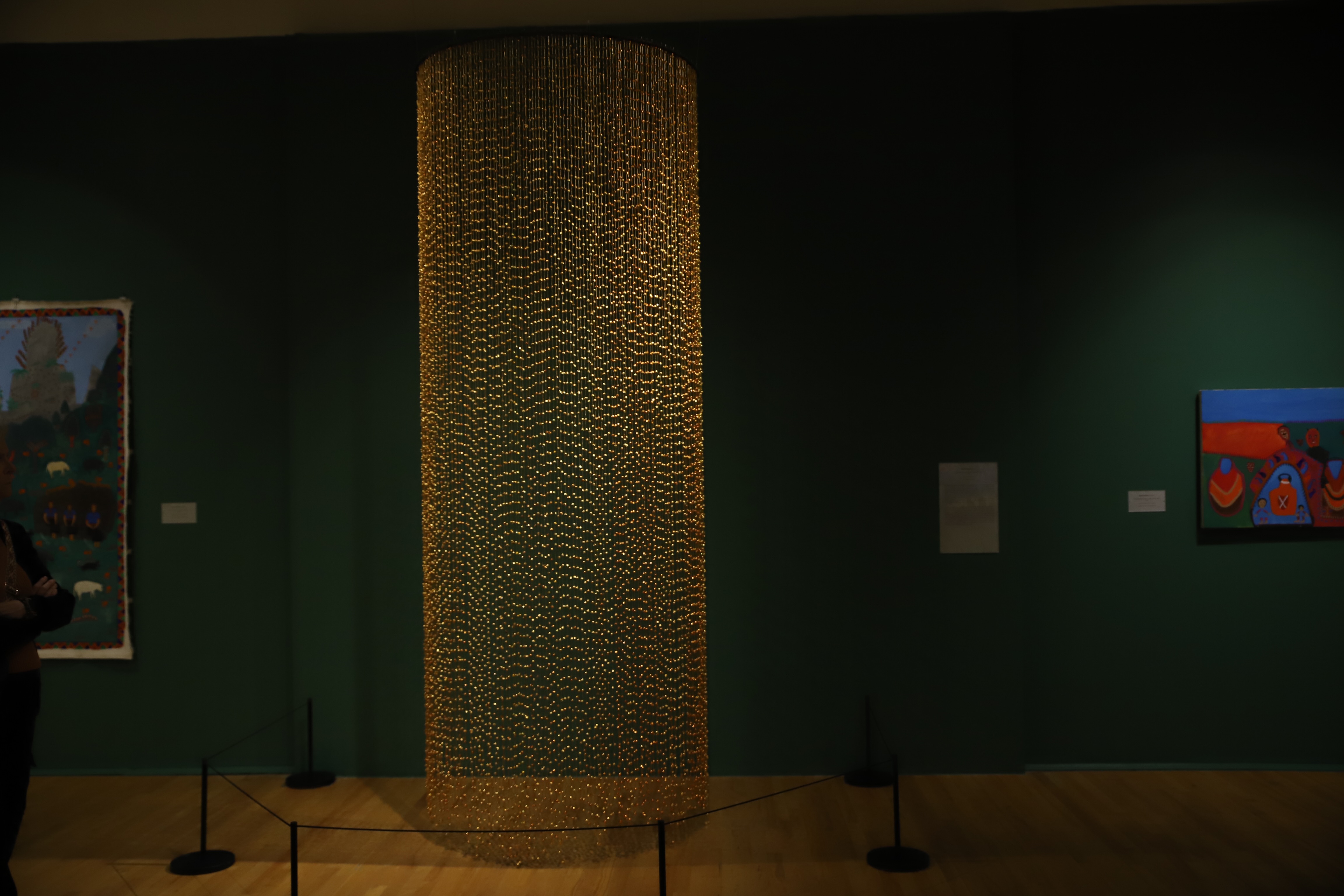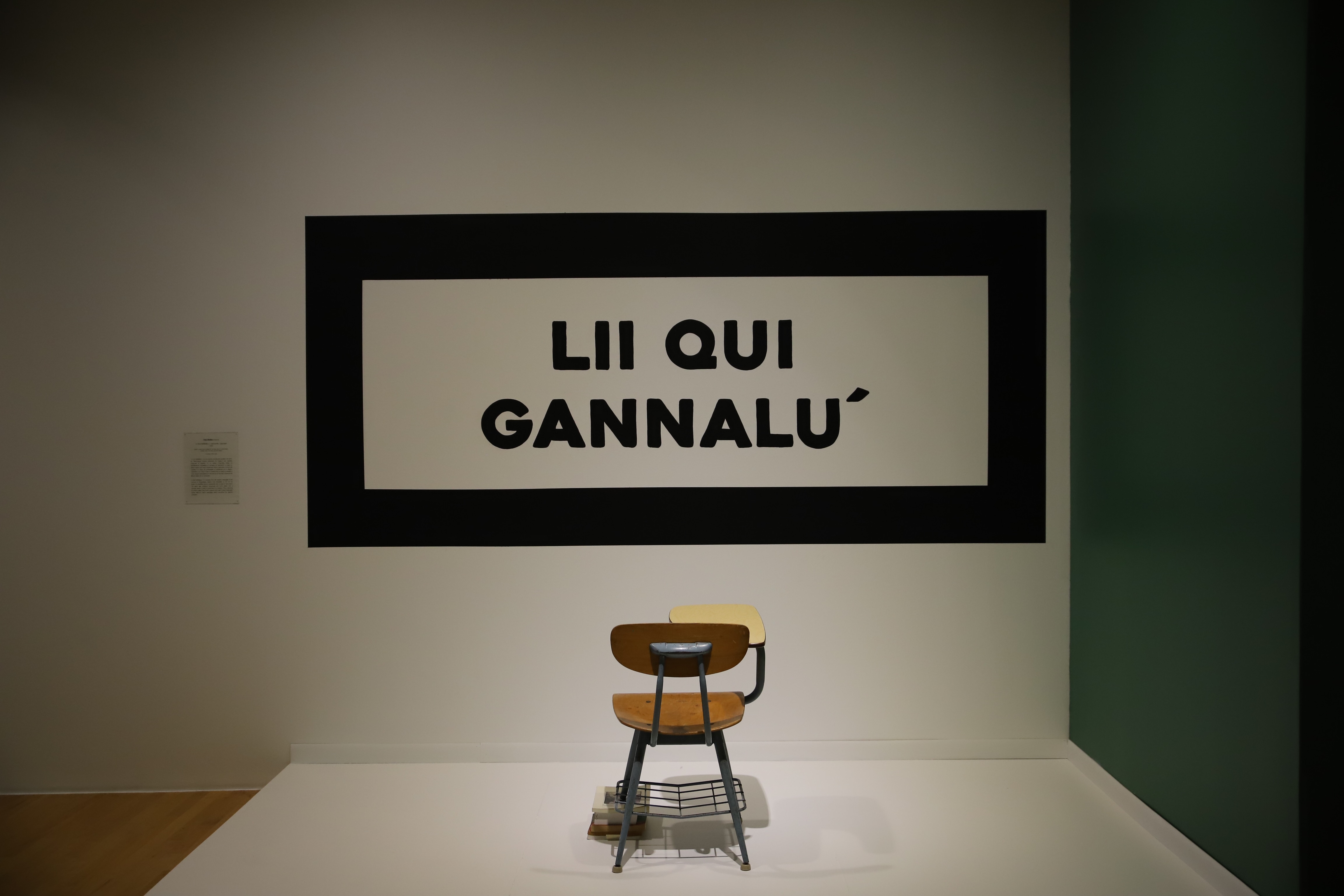The exhibit at the National Museum of Mexican Art is celebrating native Mexican cultures.

Golden Rain by artist Ana Hernandez takes the form of a traditional headdress of the Isthmus Tehuantepec region. The display was eventually blocked off with the fence seen above to prevent children and adults alike from getting too interactive with the art, according to one of the security. Photo by Citlali Perez, 14 East.
The term “Indigena” or Indigenous is “a political category resulting from Spanish colonization,” curator Itzel Vargaz says in her “Los Huecos Del Agua” exhibition at the National Museum of Mexican Art. The exhibit features Indigenous artists whose work focuses on pieces from the recreation of the present moment and the legacy left behind by their native culture.
For visitors of the museum, most of whom may not be Indigenous people of Mexico, the statement calls us to question the way we have related to Indigenous communities, whether that is undermining the knowledge these communities hold or ignoring the oppression they continue to face as a consequence of colonization.
Los Huecos del Agua represents the stories and perspectives of Indigenous communities as told by them. There aren’t enough of these stories, making us believe that they no longer exist. Growing up, the Mexican art I was exposed to mainly consisted of Frida Kahlo. Kahlo was rewarded and credited for Indigenous art, while not being Indigenous herself, disassociating, whitewashing, and appropriating Zapotec culture as the creator of her art.
Los Huecos del Agua presents work from artists from different regions in Mexico ranging from Oaxaca, Chiapas and Guerrero; but all share the common label of “Indigeneity.”
Vargaz wrote: “From the vast artistic backgrounds and the artist’s aesthetic and conceptual approaches, a clear criticism appears towards the forced Hispanicization, the environmental degradation due to the State’s concessions of land, the annulment of their autonomy or the racist violence against them.”
These themes show up through the various art pieces that go from textiles to paintings and videos.
Before you even step into the exhibit, a long mesmerizing golden curtain hanging from the ceiling glistens and catches your eye through the glass doors from the hallway.
“Lluvia Dorada” or (Golden Rain) by Oaxacan artist Ana Hernandez, represents the sacredness of rain for the Zapotec people of Tehuantepec, Oaxaca, according to the artist’s statement. When you look close up, you can tell that this beautiful arrangement is made up of crumbled metallic pieces of foil.
Pieces, such as Hernandez’, demonstrate the wisdom of Indigenous communities that persists through today’s generations. Much of this knowledge has to do with our relationship with each other and the earth.
While walking through the exhibit you eventually encounter a school desk on top of a platform. The desk faces the wall where a Zapotec phrase is written in black bold letters. One of the chair legs rests on top of a stack of books.
A very striking display.
I was taken back to being in a classroom and feeling frustrated and confused because I did not understand the content.
The phrase reads “You don’t know.” Oaxacan artist Andy Medina successfully captures the inequity perpetuated through the Mexican education system and the racism that Indigenous students may still face.
Language was the dominant theme throughout the exhibit since the pieces all had “multilingual roots.” Each placard had a written statement in the artist’s native language, Spanish and English.
Although the museum has featured Indigenous art before, such as the Day of the Death exhibit that features both local and Mexico-based artists, this is an opportunity to see art that is more expansive in terms of the artist’s interpretations and experiences. The exhibit will be up until August 27, you can’t miss it.
Header photo by Citlali Perez




NO COMMENT